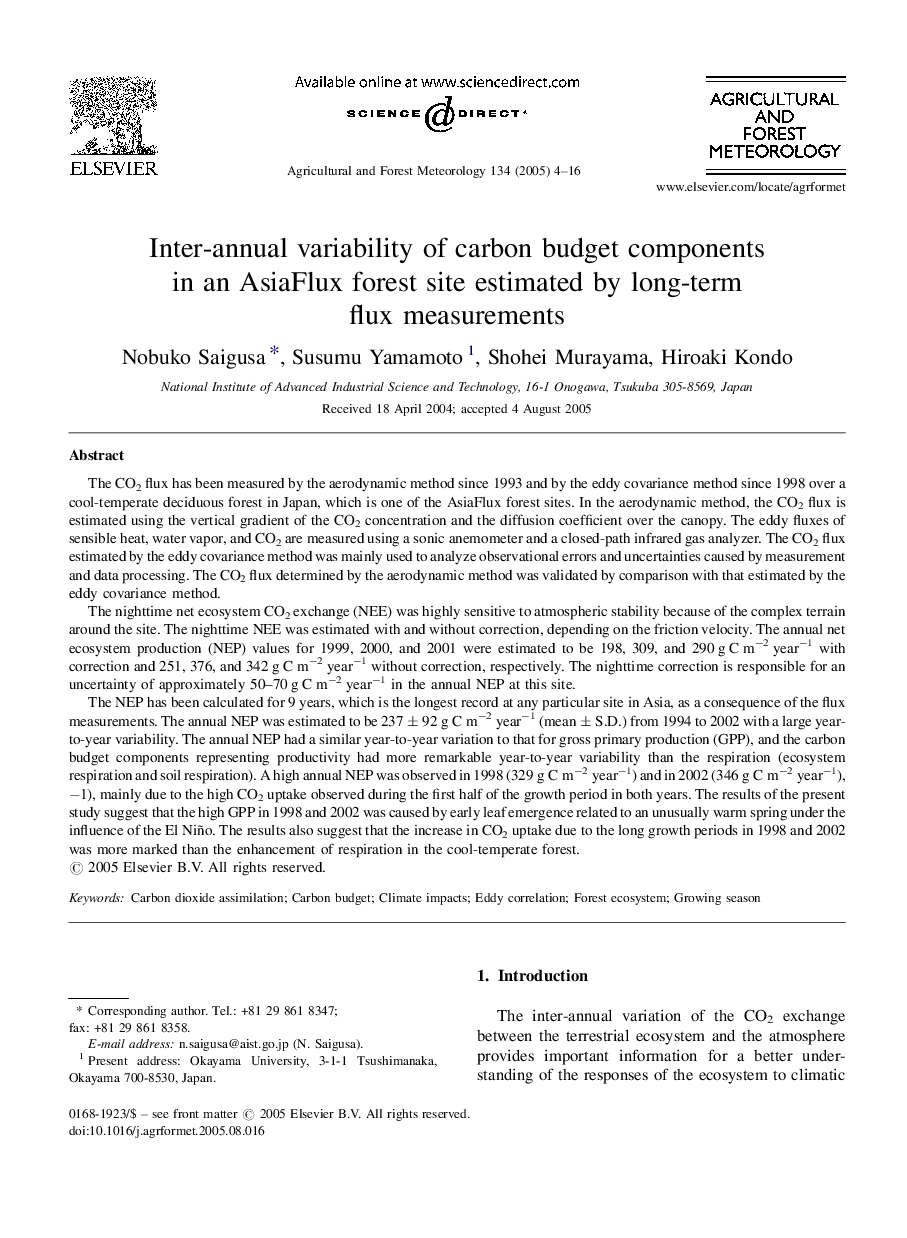| Article ID | Journal | Published Year | Pages | File Type |
|---|---|---|---|---|
| 9619405 | Agricultural and Forest Meteorology | 2005 | 13 Pages |
Abstract
The NEP has been calculated for 9 years, which is the longest record at any particular site in Asia, as a consequence of the flux measurements. The annual NEP was estimated to be 237 ± 92 g C mâ2 yearâ1 (mean ± S.D.) from 1994 to 2002 with a large year-to-year variability. The annual NEP had a similar year-to-year variation to that for gross primary production (GPP), and the carbon budget components representing productivity had more remarkable year-to-year variability than the respiration (ecosystem respiration and soil respiration). A high annual NEP was observed in 1998 (329 g C mâ2 yearâ1) and in 2002 (346 g C mâ2 yearâ1), mainly due to the high CO2 uptake observed during the first half of the growth period in both years. The results of the present study suggest that the high GPP in 1998 and 2002 was caused by early leaf emergence related to an unusually warm spring under the influence of the El Niño. The results also suggest that the increase in CO2 uptake due to the long growth periods in 1998 and 2002 was more marked than the enhancement of respiration in the cool-temperate forest.
Keywords
Related Topics
Physical Sciences and Engineering
Earth and Planetary Sciences
Atmospheric Science
Authors
Nobuko Saigusa, Susumu Yamamoto, Shohei Murayama, Hiroaki Kondo,
